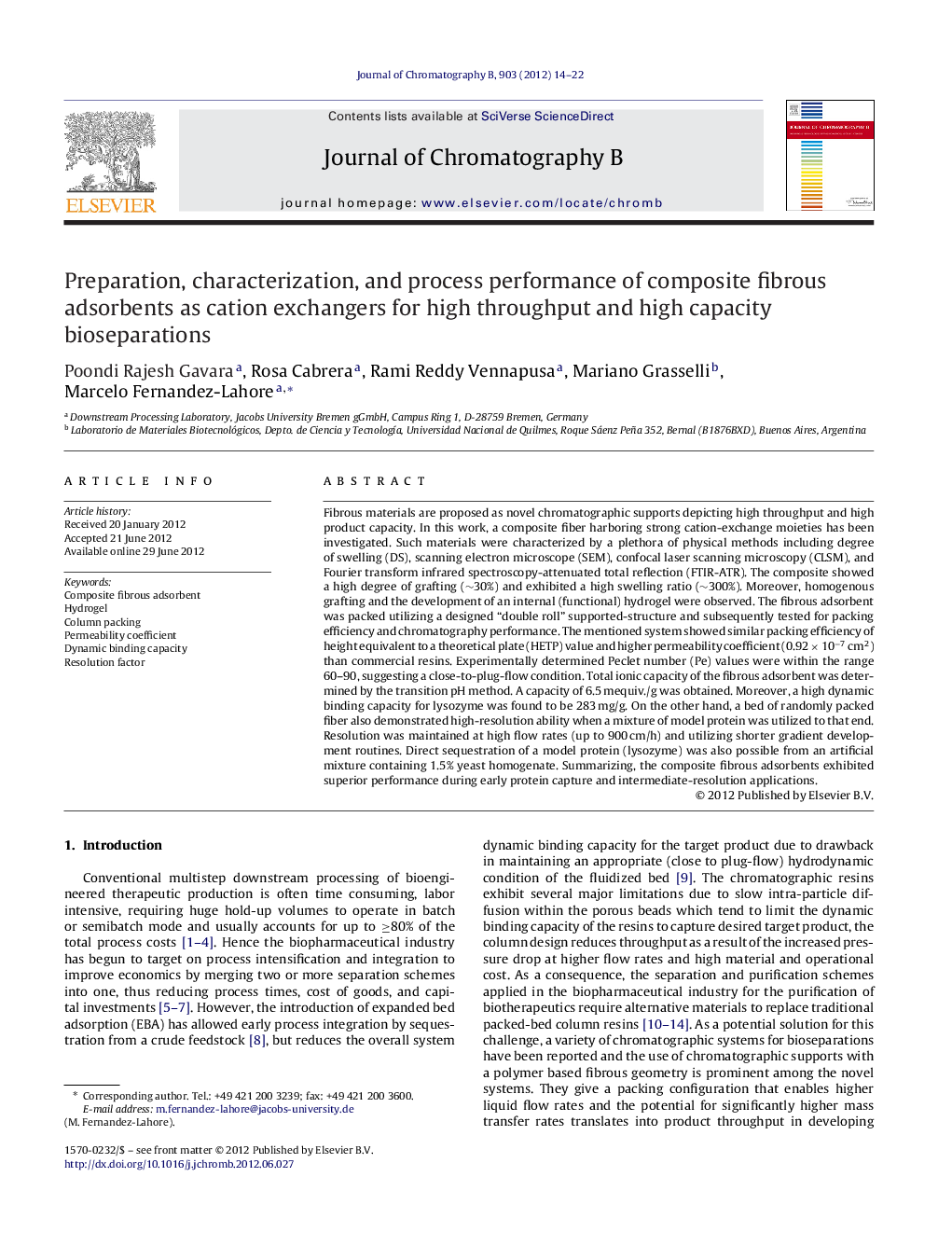| Article ID | Journal | Published Year | Pages | File Type |
|---|---|---|---|---|
| 1216786 | Journal of Chromatography B | 2012 | 9 Pages |
Fibrous materials are proposed as novel chromatographic supports depicting high throughput and high product capacity. In this work, a composite fiber harboring strong cation-exchange moieties has been investigated. Such materials were characterized by a plethora of physical methods including degree of swelling (DS), scanning electron microscope (SEM), confocal laser scanning microscopy (CLSM), and Fourier transform infrared spectroscopy-attenuated total reflection (FTIR-ATR). The composite showed a high degree of grafting (∼30%) and exhibited a high swelling ratio (∼300%). Moreover, homogenous grafting and the development of an internal (functional) hydrogel were observed. The fibrous adsorbent was packed utilizing a designed “double roll” supported-structure and subsequently tested for packing efficiency and chromatography performance. The mentioned system showed similar packing efficiency of height equivalent to a theoretical plate (HETP) value and higher permeability coefficient (0.92 × 10−7 cm2) than commercial resins. Experimentally determined Peclet number (Pe) values were within the range 60–90, suggesting a close-to-plug-flow condition. Total ionic capacity of the fibrous adsorbent was determined by the transition pH method. A capacity of 6.5 mequiv./g was obtained. Moreover, a high dynamic binding capacity for lysozyme was found to be 283 mg/g. On the other hand, a bed of randomly packed fiber also demonstrated high-resolution ability when a mixture of model protein was utilized to that end. Resolution was maintained at high flow rates (up to 900 cm/h) and utilizing shorter gradient development routines. Direct sequestration of a model protein (lysozyme) was also possible from an artificial mixture containing 1.5% yeast homogenate. Summarizing, the composite fibrous adsorbents exhibited superior performance during early protein capture and intermediate-resolution applications.
► We observed an internal functional hydrogel in a novel composite fiber. ► We found high dynamic binding capacity for lysozyme. ► High resolution was exhibited at high flow rates that can be used in purification. ► We demonstrated the superior performance during early protein capture.
